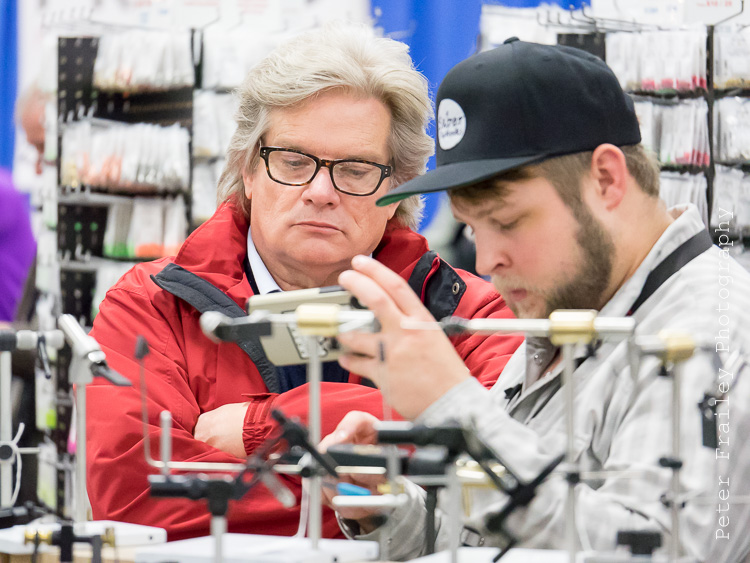Last weekend I took the Panasonic 35-100 mm zoom (70-200 mm equivalent on a Panasonic or Olympus digital camera) to the annual Fly Fishing Show in Marlborough, MA. I should use this lens more often. It's relatively small and light for an F2.8 lens (just 12.7 ounces and 3.9" long). Because it has internal zooming, it does not extend or "trombone" like so many lesser lenses. I think this actually makes it easier to hold steady.
 |
| Panasonic 35-100 F2.8 attached to an Olympus E-M1 |
I found in looking at my Lightroom catalog of images that the last time I used this lens was a year ago. It was at the same event, on the same weekend in January. I guess because I don't do much people photography, this lens is a bit of a niche player for me, and so doesn't get a lot of use. But I do love it!
While I walked around the show randomly photographing people I could see why this focal length range is so important to wedding photographers. I took all my photos at the maximum F2.8 aperture so as to isolate the subject (i.e. blur backgrounds and foregrounds), something I could not have done with the kit 40-150 F4-F5.6 zoom. Not to mention that even at F2.8 I sometimes needed ISO 6400 for a decent exposure.
[You might wonder why I don't take this lens with me for landscapes and travel. Well, 70% of my travel needs are quite adequately taken care of by the Olympus 12-40 F2.8. For the rest, the kit 40-150 mentioned above is quite satisfactory. It provides a bit more reach too. As expected, for a slower lens, it is even smaller and lighter than the 35-100. And because I'm usually shooting at F4 to F8 for depth of field purposes, an expensive, heavier, bigger lens is unnecessary.]
Here are a few of my favorites from the Fly Fishing Show:
The first four were taken at ISO 6400, F2.8 and shutter equal to 1/equiv. focal length.
The next nine were taken at ISO 3200 to 5000
Taken between ISO 500 and 2500




























